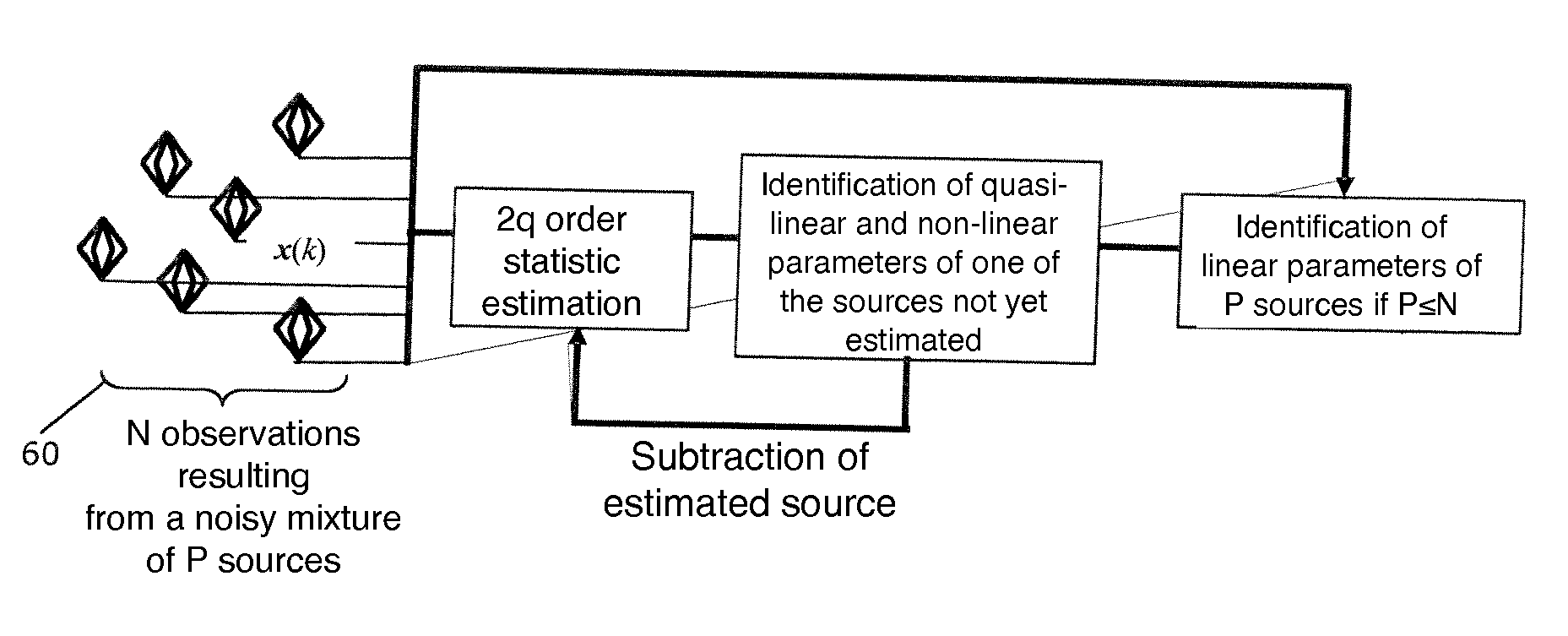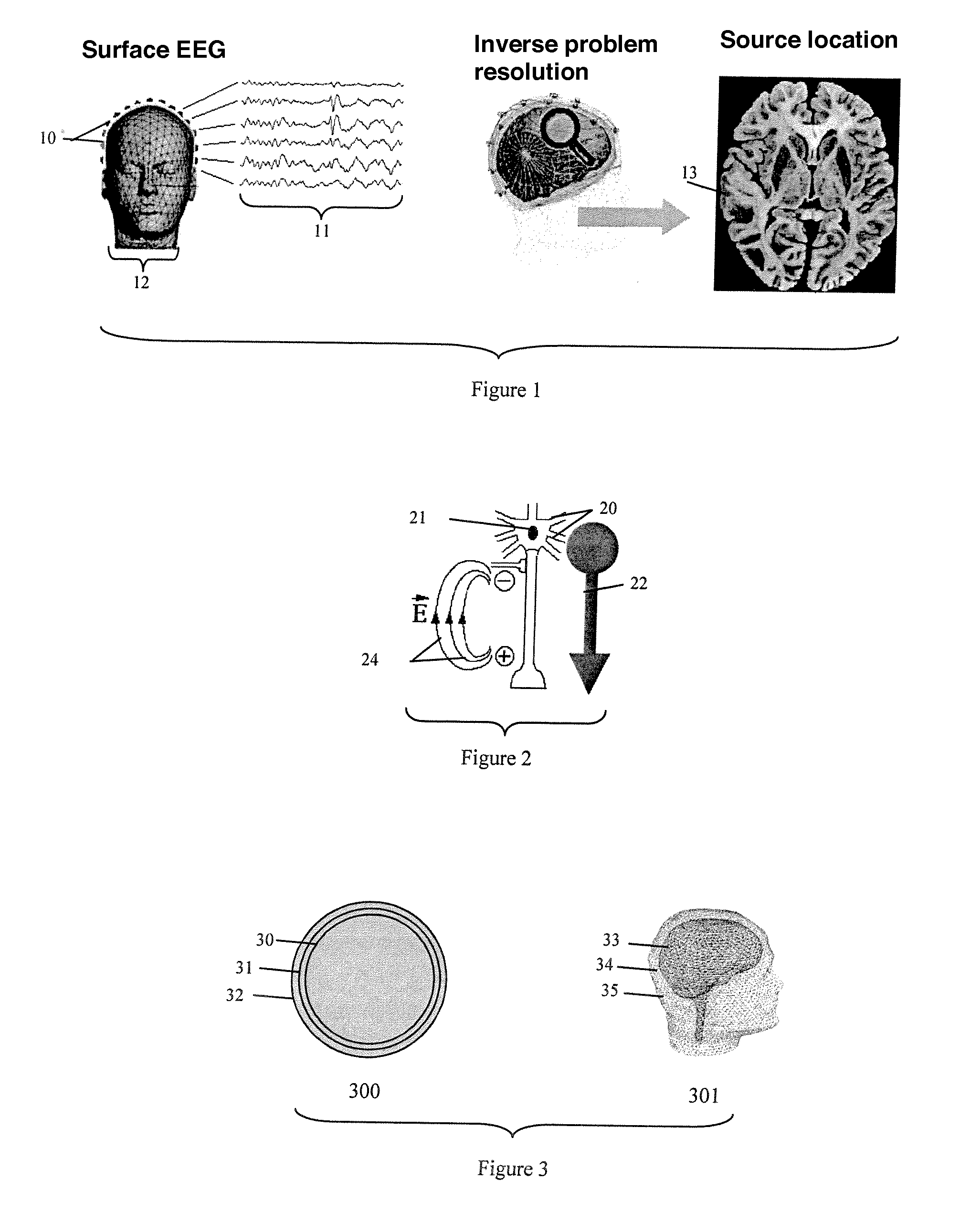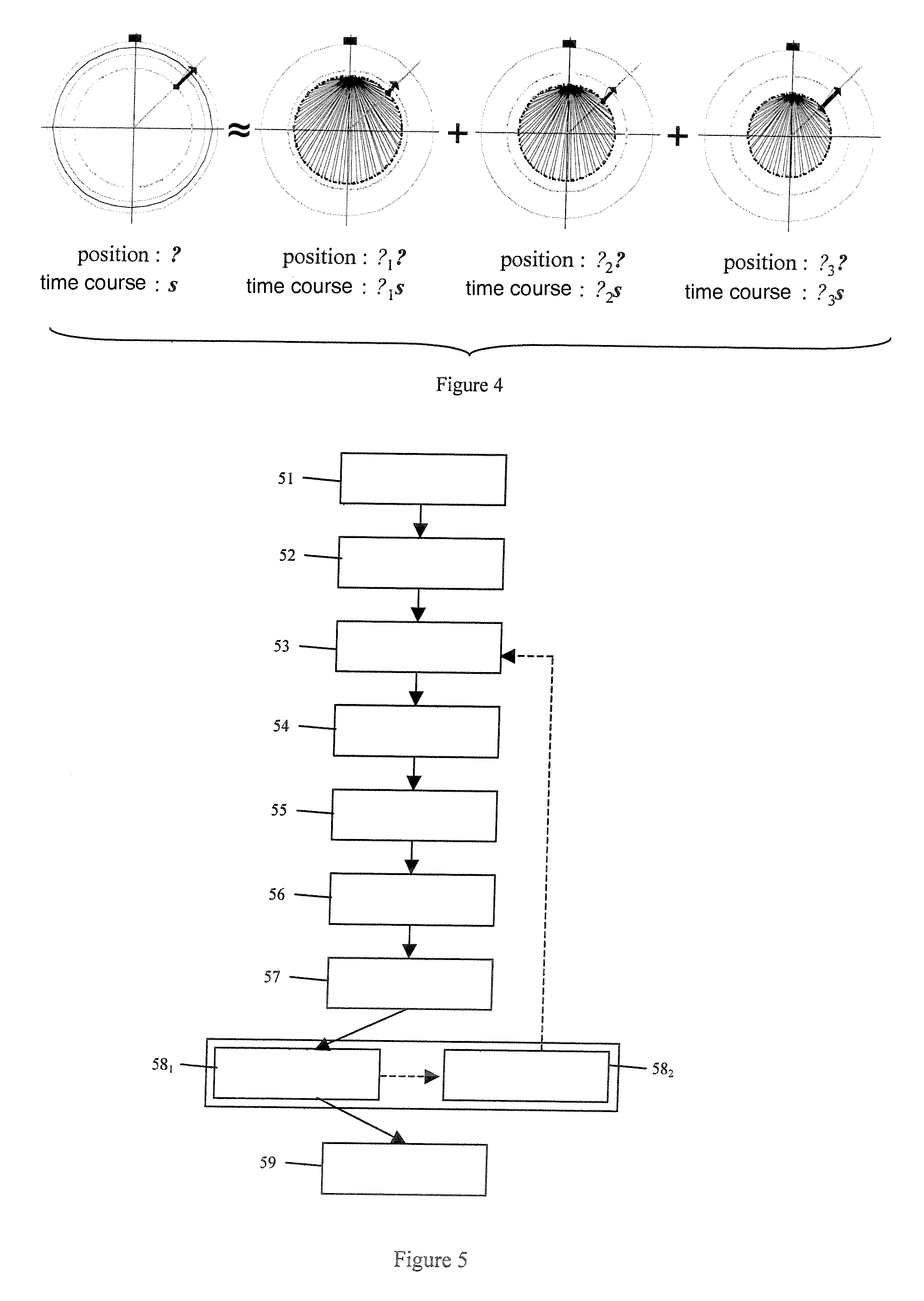Multi-dimensional parameter identification method and device: application to the location and reconstruction of deep electrical activities by means of surface observations
a multi-dimensional parameter and surface observation technology, applied in the field of multi-dimensional parameter identification methods and devices, can solve the problems of source mixture, limited method ability to detect temporal, inaccurate reduction of cerebral function, etc., to improve the estimation of parameters, increase the resolution of the sensor network, and increase the opening
- Summary
- Abstract
- Description
- Claims
- Application Information
AI Technical Summary
Benefits of technology
Problems solved by technology
Method used
Image
Examples
Embodiment Construction
[0119]The various figures are discussed below through the detailed description of an embodiment of the invention.
[0120]As of now, in relation to FIG. 2, if an excitatory synapse on the dendrites 20 of a cortical pyramidal neuron 21 is taken into consideration, the synaptic activation induces on the post-synaptic membrane a depolarization 22 comparable to a current input. This massive input of ions is counterbalanced by current outputs 24 downstream from this point, along the membrane. An activated neuron may, as a result, be compared to a group of positive charges separated by a small distance, i.e. at a current dipole. The extracellular currents 24 and, as a result, the potential fields established between positive and negative regions are the source of the EEG activities collected on the surface.
[0121]In addition, FIG. 3 illustrates in the left part thereof a spherical head model (300) consisting of three concentric layers, representing the brain 30, skull bone 31 and skin of the ...
PUM
 Login to View More
Login to View More Abstract
Description
Claims
Application Information
 Login to View More
Login to View More - R&D
- Intellectual Property
- Life Sciences
- Materials
- Tech Scout
- Unparalleled Data Quality
- Higher Quality Content
- 60% Fewer Hallucinations
Browse by: Latest US Patents, China's latest patents, Technical Efficacy Thesaurus, Application Domain, Technology Topic, Popular Technical Reports.
© 2025 PatSnap. All rights reserved.Legal|Privacy policy|Modern Slavery Act Transparency Statement|Sitemap|About US| Contact US: help@patsnap.com



